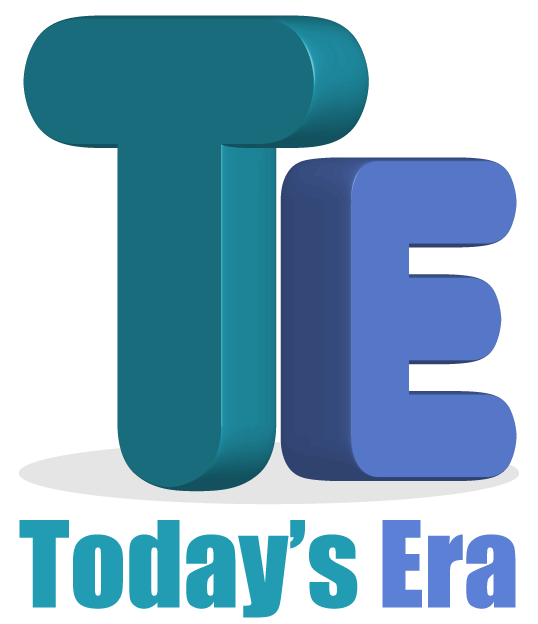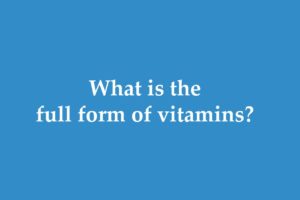What is the full form of vitamins?
Vitamin A, VitaminB 12, Vitamin C , Vitamin D, Vitamin E , Vitamin K
Vitamins have been previously were called as vital amines. There is wide range of functions performed by vitamins. Vegetables and fruits have played crucial role in providing essential elements on daily basis. A balanced diet consists of all nutrients essential for growth.
Classification of vitamins has been done in many ways scientifically. On the basis of body needs vitamins are classified as essential and non essential vitamins. On the other hand on the basis of solubility vitamins are classified as water soluble and fat soluble vitamins.
Vitamin A, D, E, K is known to be fat soluble vitamins.
Vitamin b and C are water soluble vitamins.
Carbohydrates, proteins, fats, minerals, vitamins and minerals. Each of these nutrients performs specific function in body metabolism. Carbohydrates are energy giving foods; proteins are referred to as body building foods, fats are meant to be energy giving storage units.
Minerals and vitamins are derived from vegetables. These are necessary to improve immunity and maintain body balance. There are numerous functions performed by all available components. Synchronization of all such components helps in creating feasible metabolism and body balance.
What is Full Form Of vitamin A?
Vitamin A is known as Retinol. It is an alcohol derived compound. As is clear from the name ‘Retinol’ has a major role to play in the retina regulation. There is wide variety of substances rich in retinol which helps in aiding deficiency of vitamin A.
Sources of Vitamin A: Carrot, meat, milk and fish are main sources. Meat and liver of poultry animals taken in diet also supply Vitamin A.
Vitamin A acts as a precursor for carotenoids. Carotenoids are yellow colour pigments which are involved in synthesizing multitude of pigmentation.
Deficiency disease : Whenever there is deficiency of vitamin A , the most important part to be affected is Retina of the eye. Retina is responsible for regulating night vision. Whenever there is retinol deficiency retina cannot alter itself with respect to the light availability at night and hence it results in night blindness.
Xeropthalmia, Dry scaly skin is few deficiency diseases caused by vitamin A.
Vitamin D refers to ‘calciferol’
Sources of Vitamin D: Fish liver oil, sunlight are two major sources of vitamin D.
Diseases and deficiency symptoms:
Vitamin D is also called ‘calciferol’ and it is responsible for helping in calcium absorption in body. It is due to deficiency of vitamin D, rickets is caused and bone deficiency becomes weaker at younger age. After a certain age the decalcification of bone causes osteomalacia.
After pregnancy or lactation, diet should contain huge amount of vitamin D to increase the absorption.
Permissible value of Vitamin D: 10mg
Permissible value of Vitamin above 22 years: 25 mg.
Vitamin E: Tocopherol
Sources of Vitamin E: Wheat germ oil. Cereals, green plants, egg yolk and milk fat butter are one of the richest source of vitamins.
Diseases and deficiency symptoms
Vitamin E activity of foods stimulates urinary excretion. Vitamin E is relatively non toxic. It is suggested that high levels of vitamin E stops oxidation. This prevents formation of peroxides formation. Deficiency of vitamin E may also lead to sterility.
Vitamin K
Sources :
The best source of vitamin K is spinach and all other leafy vegetables. The major role of vitamin K is clotting of blood.
Whenever there is a major cut in the body , there is prothrombin stimulated which in turn is initiated by vitamin K. An average mixed diet of food provides 300- 500 milligram of vitamin K.
Deficiency disease of vitamin K :
Enhanced clotting time of blood is one of the primary deficiency disease of Vitamin K.
Preferred daily intake :
12- 20 micro gram for children.
50-100 micro gram for adolescent.
70-400 micro grams for adults.
Vitamin B12
Sources : Scientifically termed as ‘Cobalmin’, vitamin B12 is found in food of animal origin. Liver and kidney are the major sources of Vitamin B 12. Cobalmin also performs the function of transferring methyl groups in the body.
Deficiency disease of Vitamin 12
A long term deficiency of vitamin B 12 results in pernicious anaemia.
Preferred daily intake
Vitamin B 12 should be taken daily as a food supplement or in diet.
Vitamin C
Sources : Vitamin C is also referred to as ascorbic acid. Citrus fruits like lemon, guava, green leafy vegetables and capsicum are main sources of vitamin C.
Vitamin is most unstable vitamin and it’s easily degraded in presence of light. Ascorbic acid has both oxidizing and reducing properties.
Milk, eggs and most of the poultry products lack ascorbic acid.
Deficiency Disease :
Deficiency disease caused due to vitamin C is scurvy. Scurvy refers to the condition of loosening of the collage-nous tissue. The tooth gums swell and bleeding causes foul smell and major oral problems.
Preferred daily intake
45mg/day for children.
60mg/day for adults.
20mg/day for pregnant women and 40 mg/day for lactating women.
Stay Informed and connect to Today’s era Full form list for the latest updates.”

